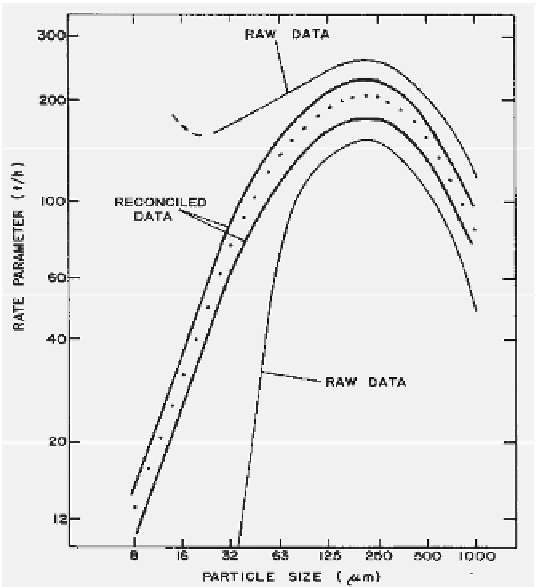Environmental Engineering Reference
In-Depth Information
Figure 2.13
Standard deviation intervals for grinding rate parameters calculated from either raw
or reconciled data
particularly when the state variable amplitude variations due to process dynamics
are larger than the inherent measurement errors.
Various options are available to tackle the dynamic data reconciliation problem
[40]. On-line application of SSR is the first option [54, 92], but it usually generates
estimation errors larger than the measurement errors [76]. Averaging techniques
coupled to steady-state data reconciliation can be used to compensate dynamic vari-
ations. However, this usually induces phase lags that deteriorate the process control
performances [93], and tuning problems of the time window [65, 94]. Dynamic rec-
onciliation is obviously required for batch or semi-batch processes [31, 95].
Mass conservation constraints incorporating material accumulation terms can be
used [36, 37], but usually metallurgical inventories are not measurable or extremely
inaccurate. Furthermore, the observability of these inventory variables, when un-
measured, is quite problematic. Treatment of accumulation rates as stochastic ele-
ments, as in the stationary method presented in Section 2.7.2, is a powerful alter-
native to the explicit use of inventories. However, the tuning of the variance of the
uncertainties related to the neglected dynamics is a difficult task [96] for on-line
application of stationary reconciliation methods [97].

Search WWH ::

Custom Search